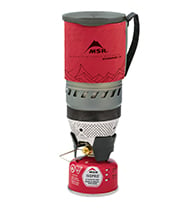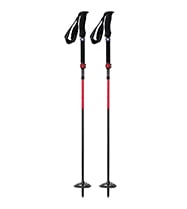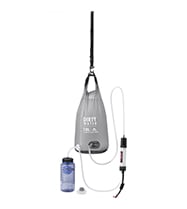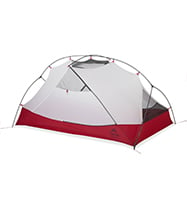Exploring the Wilderness Areas of Scotland
When considering the wild areas of the UK, my mind quickly pans straight to Scotland which houses some of the remotest places in the country, vast planes of uninhabited wilderness and towering mountains. Each region of Scotland has its own unique feel, from the valleys of Glencoe and the planes of Glen Shiel to the wild sandstone landscapes of Torridon. Traveling through these areas gives a sense of a very different Scotland depending on the area that you are in.
This summer, I decided to head out for a week to get a couple of routes ticked off and to spend some time in the outdoors, a welcome break from the 9-5 office job. The plan was to visit some old favourites and a couple of new spots along the way.
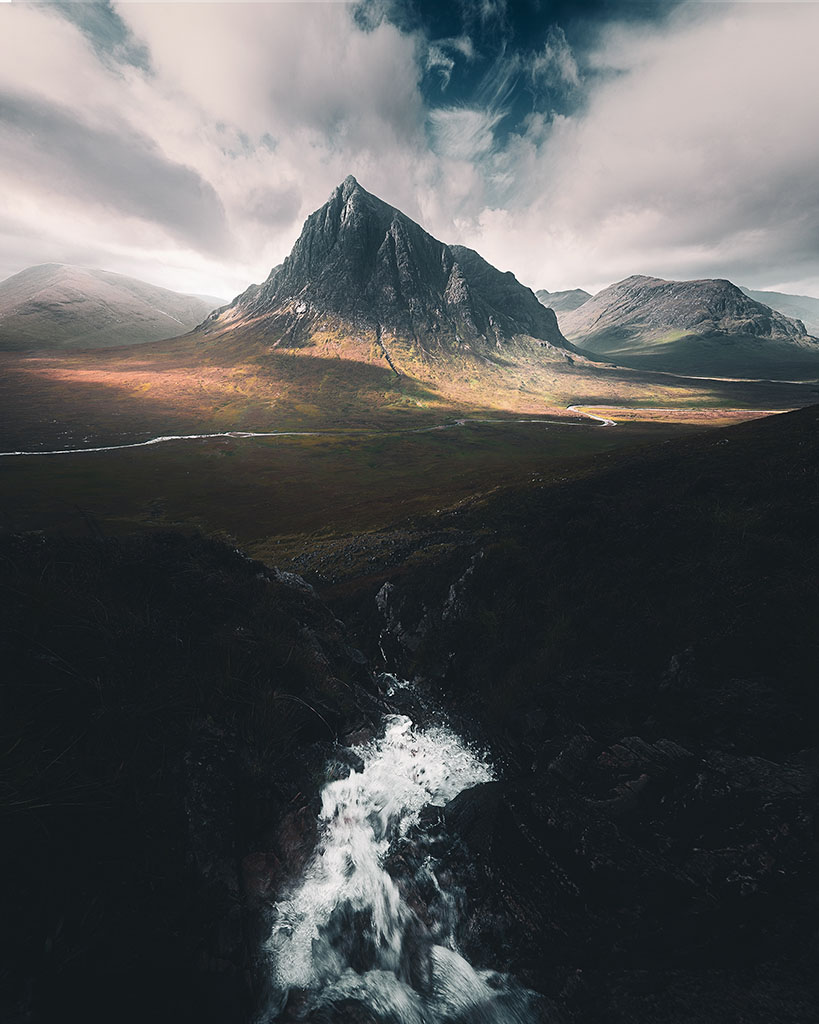
Days 1-2
Glencoe and Glen Etive are often the first port of call on a Scotland trip for me—it’s a place I feel most at home, having visited many times over the past few years. It’s the first main mountainous region you encounter, and you can’t help but notice the mighty Buachaille Etive Mòr as you drive through the valley, standing alone amongst all the other mountains in the area. It’s an obvious stop for me as a photographer and is a peak that just calls out to be photographed.
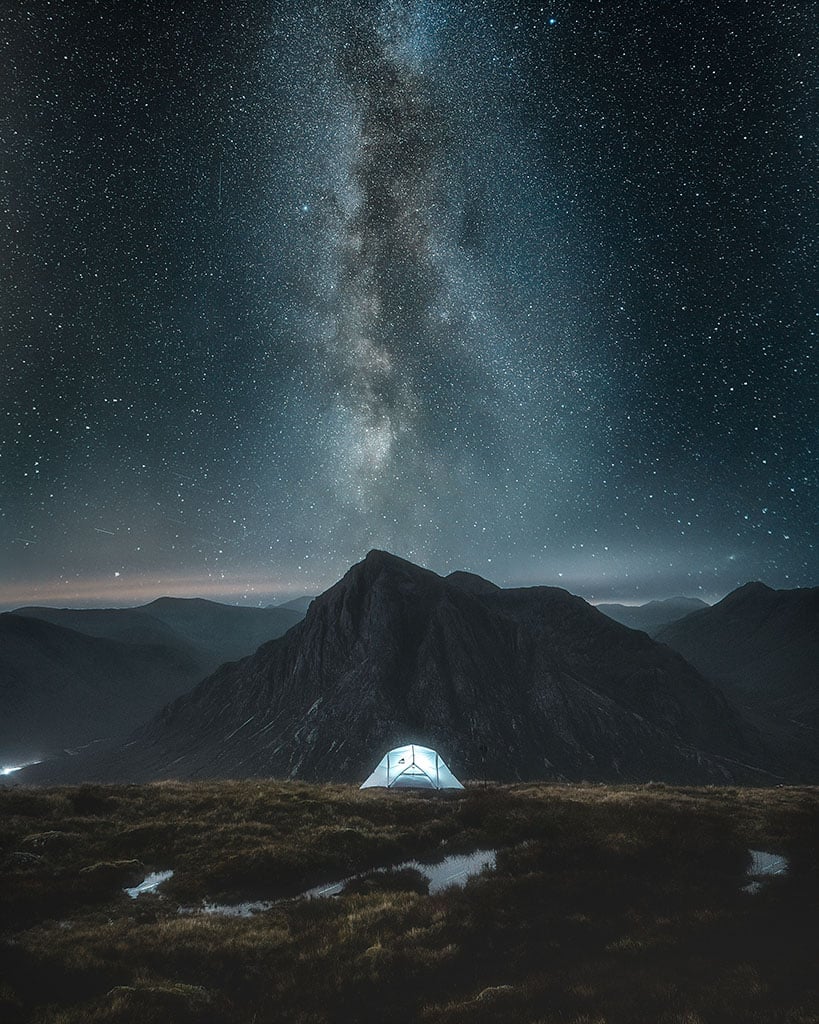
The mountains of Scotland, including Buachaille Etive Mor and the surrounding Glencoe hills, were birthed from volcanic eruptions around 420 million years ago. At that time, they were much taller than they are today, with some peaks reaching heights of Himalayan proportions. Experts believe that some peaks at that time were taller than Mount Everest is today. After a process of ice ages over millennia, the glaciers were carved out the mountains that we can see today.
Of course, there are many other mountains and trails in this area, with the UK’s highest mountain, Ben Nevis, just up the road, the mighty Aonach Eagach ridge and the Three Sisters of Glencoe all nearby options.
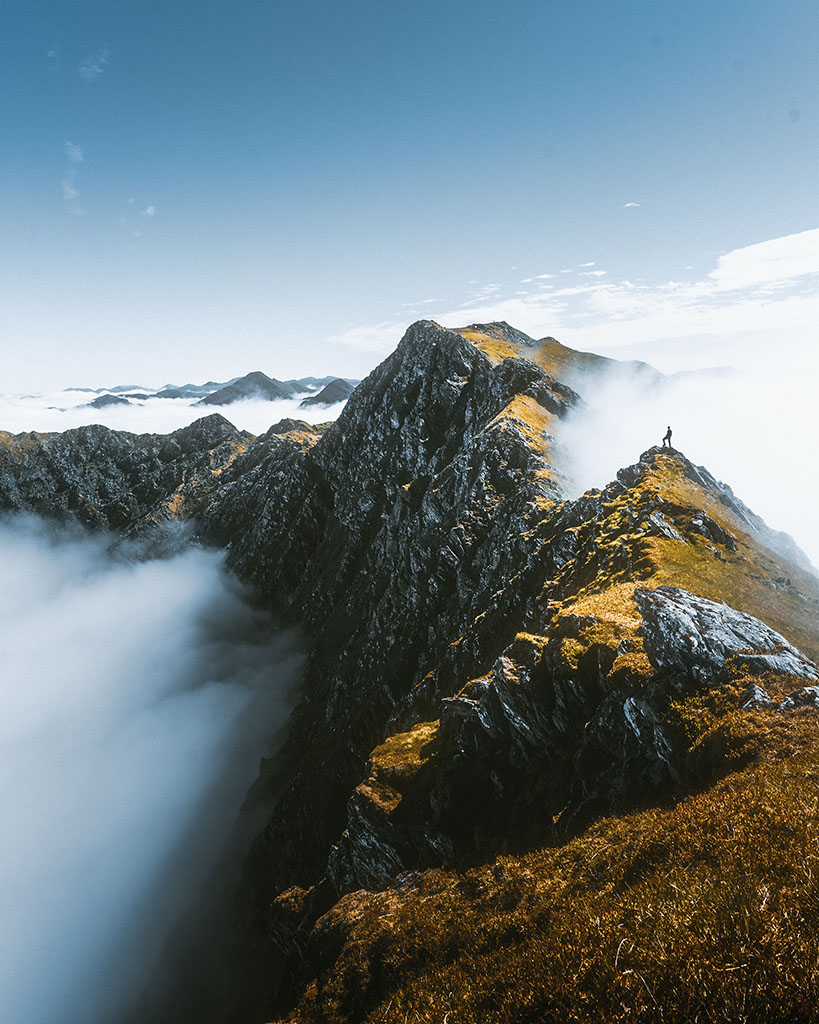
Days 3-4
As we headed further north, I visited an area new to myself: Glen Shiel. As I wandered the trails through the mountains, I noticed how much quieter the trails were and how many fewer tourists were present. I spent a night at the summit of a mountain during my recent trip and only encountered a handful of people in two days. Camping in the mountains of Scotland is, in my opinion, the best way to truly get a feel of the place but the mountains of Scotland are unforgiving and knowledge of mountain hillwalking is a must. The MSR Access™ 2 is my go-to tent for Scottish camping. With the weather being so unpredictable, having a sturdier tent goes a long way should the winds pick up.
An essential kit list for a Scottish camping trip would include a sturdy tent like the Access, a comfortable sleep system (the one I use is a Therm-a-rest NeoAir® XTherm™ paired with either a Therm-a-rest Corus quilt or a hefty winter sleeping bag depending on the season), a good solid stove and a way to treat water. For this trip I brought my MSR Windburner® stove, MSR Guardian™ Gravity Purifier to always have water at camp and my MSR TrailShot™ filter for on-the-go water while in the hills. Also, do not forget your midge spray and head net, Scottish summers can be ruthless thanks to the tiny winged devils!
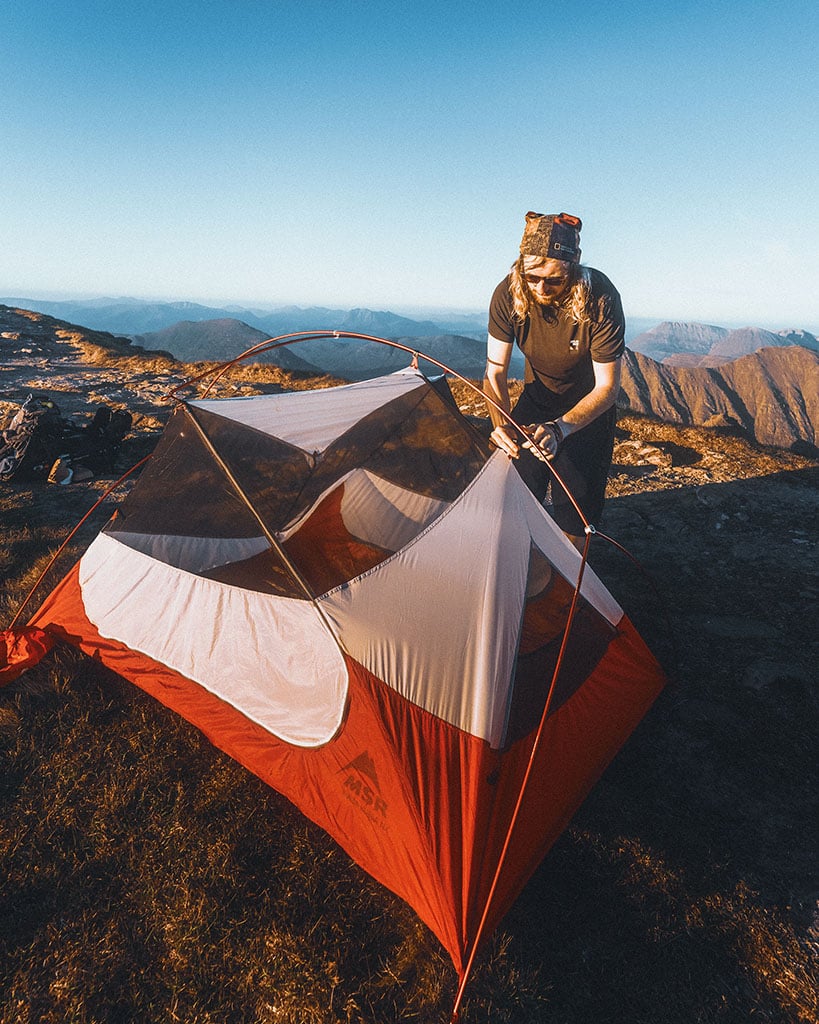
Days 5-7
Further north still, Torridon is a small village surrounded by a wild landscape of mountains made up mainly of a type of sandstone that has become known as ‘Torridonian sandstone’. Experts believe that these are some of the oldest rocks in the world, having been laid down around some 2,500 million years ago. Some of the area’s most notable mountains are Beinn Alligin, Beinn Eighe and the impressive Liathach Ridge.
Following my camp in Glen Shiel, I took a day’s rest and met up with a few friends who were in the area. We decided to head up the famous Beinn Alligin for a summit camp to catch sunset and sunrise. Starting from the car park we headed up the mountain, taking the anti-clockwise route as there was trail work being carried out on the recommended ascent. The approach, as with most mountains in Scotland, was long but offered plenty of wild swimming spots along the way, which were a welcome stop-off in the scorching summer heat. After spending a bit more time than intended at the pools, we headed onto the mountain and made our way up the initial 866m of the climb.
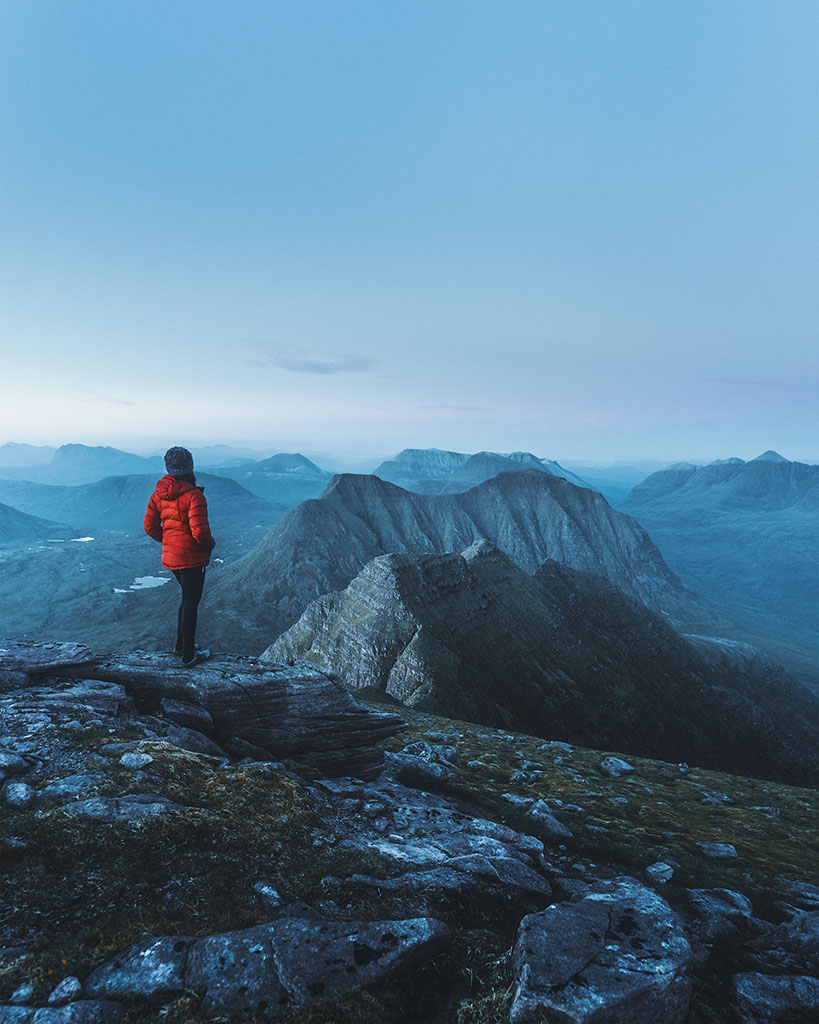
The Beinn Alligin range is made up of two Munros (a peak over 3,000 feet) and one Corbett (a peak between 2,500-3,000 feet). We took a short break at the summit of the Corbett before continuing onto the first Munro then onto the second. We arrived at the highest part of the loop at 9:30 pm, set up camp and waited for sunset. Scotland in summer is strange—being quite far north, the sun doesn’t set until around 10 pm and it doesn’t really get dark through the night. Having only ever ventured up north during the winter, the bright nights were quite alien to me and an eye mask recommended by a friend was a useful tool. By the time we had taken some photos and made some food, it was time for bed if we had any chance of catching the sunrise at 5 am.
The feel of this area is second to none in my opinion and I’ve only just begun to scratch the surface of exploring all of its mountains. The area is vastly untouched with only a few trails leading into the mountains—you really get a sense of being out in the wild.
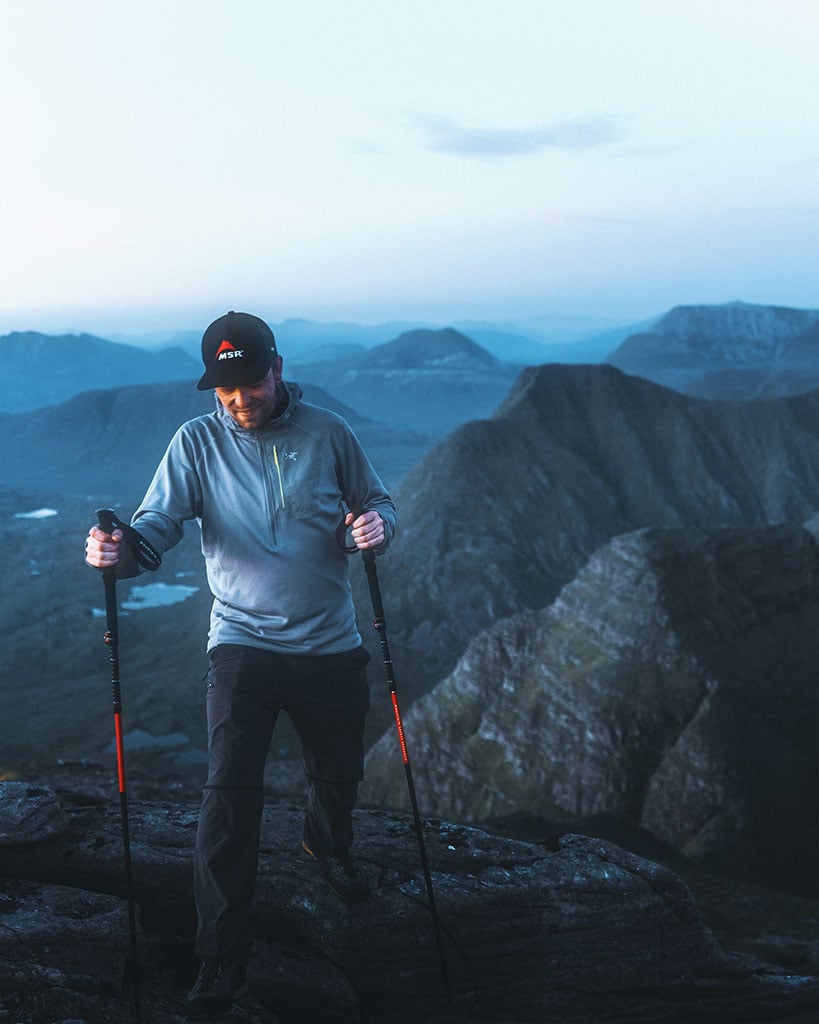
All the routes in this write-up were planned using maps and GPS devices. A couple of resources that I find really useful for exploring Scotland’s mountains are:
- Routes and trails
- Weather
5 Tips for Wild Camping in Scotland
- Don’t assume the weather. The weather regularly changes in Scotland and what can start as a sunny hike can quickly turn into a cloudy navigational challenge, especially in the hills.
- Leave no trace. A general tip for wild camping anywhere: leave the site as you found it. No rubbish, no fires, etc.
- Bring midge spray and head nets. Summer in Scotland can get as many as 64 billion midges.
- Approaches to mountains can be long and arduous. A good set of hiking poles can go a long way.
- Take an eye mask for the summer months. Sunset is quite late and sunrise is very early.
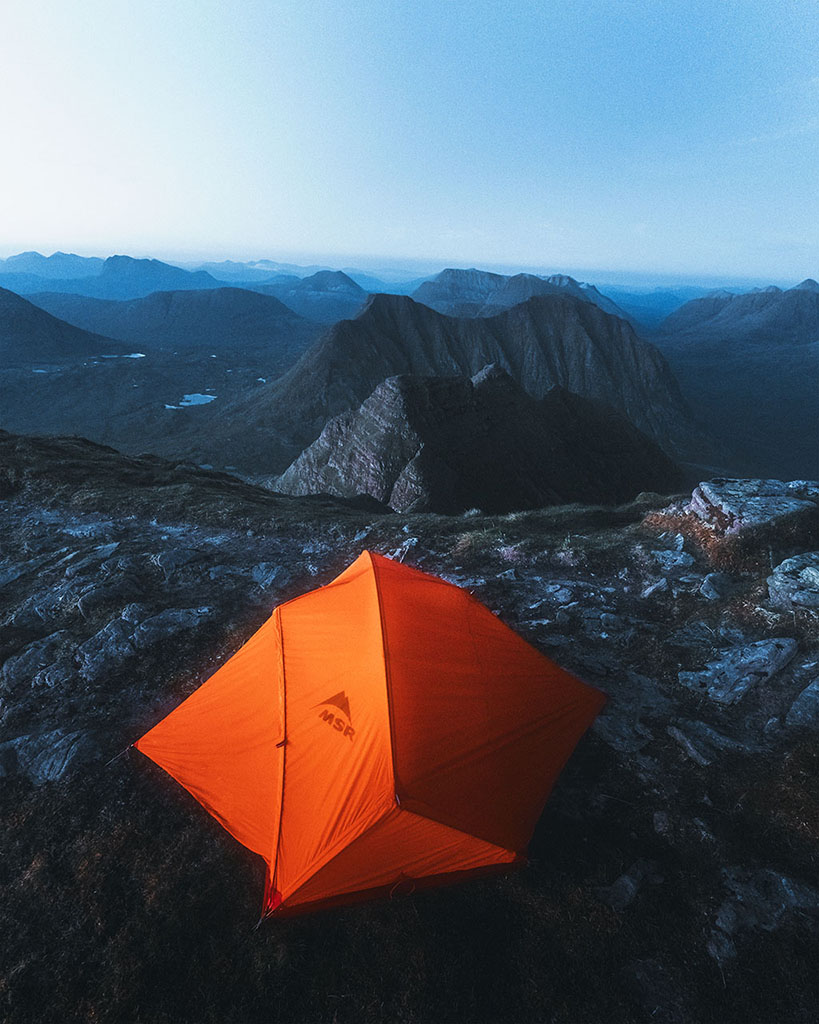
My general wild camping kit list:
- 65L backpack
- MSR Hubba Hubba™ NX 3-season tent or MSR Access 4-season tent
- Therm-a-rest NeoAir® XTherm™ sleeping pad
- Therm-a-rest Corus™ quilt for summer or hefty winter sleeping bag
- MSR Windburner stove
- MSR fork and spoon
- MSR Guardian Gravity purifier/MSR TrailShot filter
- 2 headlamps (always good to have a backup)
- Spare socks, change of base layers to sleep in
- Midge spray, head net, sun cream, blister plasters/bandages
- GPS/OS paper map and compass
Food for an overnight camp:
- Porridge mixed with powdered milk & dried fruit, just add water
- Sandwich for lunch
- 1 boil-in-the-bag or dehydrated meal
- Snacks: High energy protein bars, Kendal mint cake or flapjacks
Related Posts:
- Five Off-the-Beaten-Path Adventures Around the World
- Fuels Around the World: Finding Stove Fuel In A Foreign Country
- Hit the Trail: Five Great Hikes to Explore in the New Year
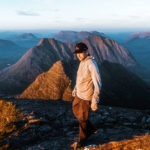 About the Author
About the Author
John Loftus is a photographer from Liverpool, UK and who loves nothing more than spending a night tucked away in his tent at the top of a remote mountain waiting to capture the stars if the sky is clear or the sunrise in the morning if he doesn’t snooze his alarm! The mountains are where he feels most alive, and he loves to capture images from his travels to inspire others to get out and experience the beauty of the great outdoors.

